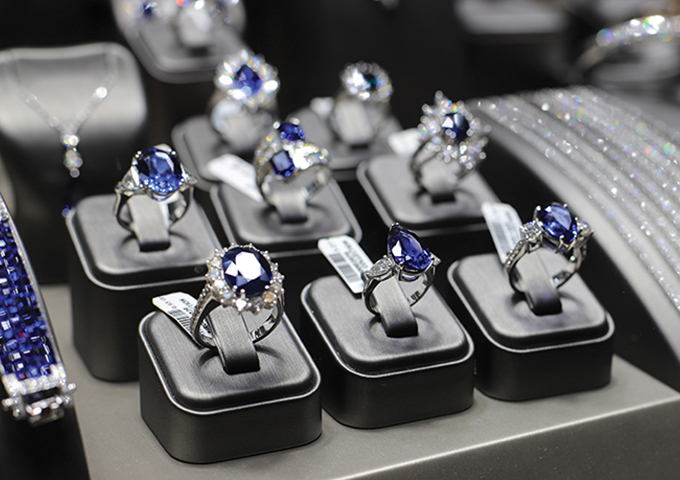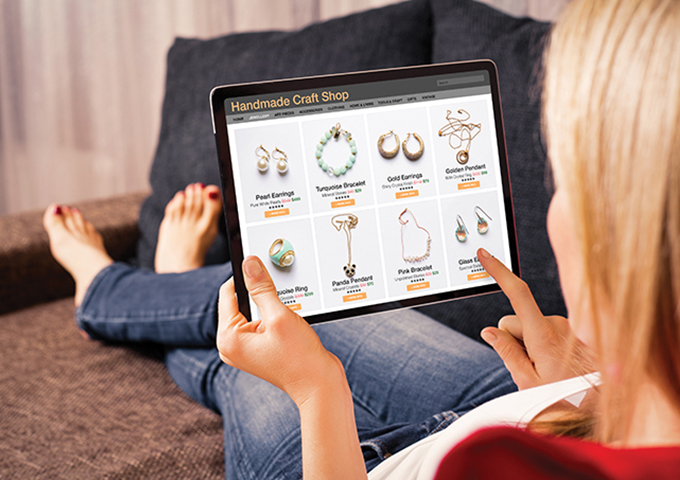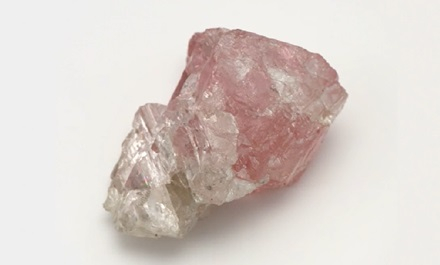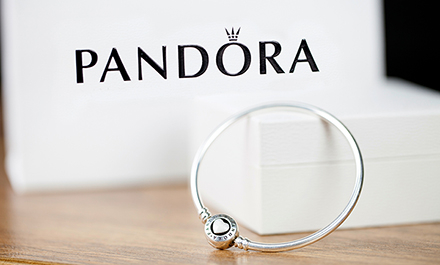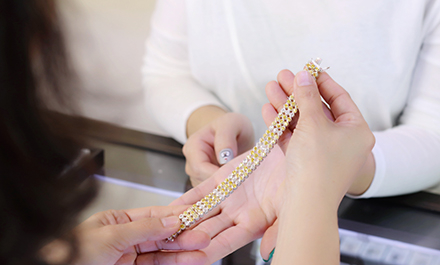Consumers’ unrelenting appetite for jewellery to celebrate moments and achievements continues to defy large-scale challenges but the way they choose, interpret and purchase jewellery is changing.
This article first appeared in the JNA July/ August 2022 issue.
The Covid-19 pandemic was instrumental in transforming many aspects of our lives – from making healthier lifestyle choices to how we do business and purchase products. Priorities have shifted while reliance on new technology and online platforms was at its highest as in-person events became scarcer.
Companies were driven to expedite technological upgrades and modernisation efforts within and outside their organisations, and e-commerce and digital events became major components of their business strategies. At the heart of all these are changes in consumer behaviours, which have effectively altered the way that companies market and sell their goods.
Emotion-based purchases were on the rise, with consumers wanting more than ever to celebrate and commemorate loved ones, occasions and milestones.
Bain & Co and the Antwerp World Diamond Centre’s 11th annual diamond report 2021-2022, published in April this year, reported that the personal luxury and diamond jewellery markets saw decade-high growth of 35 per cent and 29 per cent, respectively, in 2021 as governments eased Covid restrictions and people were once again able to venture into shopping districts.
The study attributed the increase in diamond jewellery sales to customers’ urge for emotional gifting, increased savings, limited availability of experience-based substitutes, and restricted travel, with demand rising further during the second half of 2021 leading up to the winter holiday season.
Retail sales in major jewellery markets the US and China also recorded robust growth last year.
Data from the National Retail Federation (NRF) showed that retail sales in the US were up 14 per cent in 2021 – the highest growth rate in more than 20 years. Sales were strongest in the holiday season from November and December 2021, reaching US$886.7 billion year on year. Clothing and clothing accessories, which include jewellery retailers, saw a 33.1 per cent uptick in sales.
Citing consumers’ capability and enthusiasm to spend, NRF said it expects retail sales to grow between 6 per cent and 8 per cent to more than US$4.86 trillion in 2022.
China, for its part, recorded a 29.8 per cent growth in retail sales of gold, silver and jewellery in 2021 as business and consumer sentiment rebounded, data from the National Bureau of Statistics of China showed. Sales however receded in 2022 as China faced a severe wave of Covid-19 cases and the government implemented tough anti-epidemic policies, including lockdowns and travel restrictions.
Faced with continuous uncertainties and fluctuating Covid regulations, consumers have developed a newfound penchant for buying jewellery online, with demand for reasonably priced, daily-wear jewellery pieces providing new avenues for growth for retailers.
Apart from offering more affordable products, retailers are shining the spotlight on meaningful purchases amid the pandemic. Despite a challenging environment, customers still want to honour people and accomplishments. They also recognise the value that jewellery pieces hold, especially those adorned with top-quality gemstones in precious metals.
New trends
The jewellery sector faced significant challenges since Covid, but it has emerged stronger than before, thanks to its agile and resilient nature. Major trends are driving jewellers to up the ante and offer even more innovative products and services.
According to Hong Kong-based retailer Chow Tai Fook Jewellery Group Ltd, affordable jewellery for daily use has become one of the company’s new growth drivers over the past two years. The pandemic also resulted in changes in customer behaviours.
“Consumers turned to online shopping more than ever during the prolonged pandemic. They have become more accustomed to purchasing jewellery online and smart retailing was on the rise,” a spokesman for the group revealed.
Sales of its smart retail business rose 62.7 per cent during its fiscal year ending March 2022, driven mainly by e-commerce and smart retail apps. In terms of sales volume, its smart retail business accounted for 17.5 per cent of its mainland China operations, up from 14.7 per cent a year ago.
Chow Tai Fook focused on exploring new online channels and introducing popular and exclusive products. The company joined online platforms Douyin and Pinduoduo to bolster its smart retail business in China in FY2022.
Consumers are also assigning new meaning to jewellery and are drawn to pieces that resonate with them and their experiences. Sustainability and traceability have likewise found steady footing in the jewellery trade, with customers increasingly wanting to know where their diamonds or gemstones came from and in which conditions they were mined.
Whether the diamond miner or jewellery manufacturer is involved in initiatives that promote social responsibility and environmentalism also influences buying decisions.
Chow Tai Fook is implementing what it calls a differentiation strategy to cater to customers’ diverse needs and preferences. Its T MARK diamond brand, for instance, offers customisation services using its patented technology to ensure that every T MARK diamond is authentic and traceable.
“Given the rising demand for highly personalised jewellery in FY2022, we added a private customisation service, named T MARK PRIVATE, to our digital jewellery customisation platform, D-ONE,” revealed the company. “This exclusive feature is offered with limited availability, allowing customers to personalise the serial numbers on their T MARK diamonds to give them a unique meaning.”
Riding on the online retail revolution is luxury jeweller Bulgari, which opened a flagship store on Alibaba Group’s Tmall Luxury Pavilion in April this year to further expand its reach in China’s digital retail space. Bulgari is the latest addition to an expanding list of luxury jewellers that are opening stores on Tmall. This includes Boucheron, Cartier, Chaumet, Dior, Gucci and Van Cleef & Arpels, among others.
Data from Alibaba Group’s financial report for fiscal year 2022 ending March 31, 2022, showed that more than 124 million annual active consumers each spent over RMB10,000 (around US$1,500) on Taobao and Tmall in FY2022.
This is a clear indication of how luxury jewellers are recognising the incredibly significant role of digital sales platforms in the future of jewellery retail. J. Michael Evans, president and director of Alibaba Group, was quoted as saying that Alibaba is continuously upgrading its digital capabilities to meet the diversified needs of Chinese consumers who are relying more and more on online consumption.
Thriving in adversity
Signet Jewelers Ltd, the world’s largest retailer of diamond jewellery, reported that its first-quarter 2022 revenues reached US$1.8 billion, up nearly 9 per cent compared to last year. Virginia C. Drosos, CEO and director at Signet, attributed the broad-based growth to strong sales mainly in the bridal jewellery category.
“In our big businesses, we delivered more than US$80 million more in total bridal sales than in Q1 last year. Weddings are revenue drivers for Signet and an opportunity to establish lifetime relationships, not only with brides and grooms but entire wedding parties. They are a critical point of entry which we are capitalising on,” explained Drosos at a briefing after announcing the company’s Q2 2022 results.
Joan Holstein Hilson, chief financial and strategy officer at Signet, added that Signet can meet its customers’ growing demand for high-quality and innovative product assortments at higher price points. Nearly all its “banners,” which include Kay Jewelers, Zales, Jared, Banter by Piercing Pagoda, Diamonds Direct, JamesAllen.com, Rocksbox, Peoples Jewellers, H. Samuel and Ernest Jones, delivered their strongest growth at price points above US$3,000 in both the bridal and fashion categories.
“In bridal, growth included wedding and anniversary bands, reflecting this year’s 40-year high watermark for wedding. Our scale and tailored bridal assortments enabled this growth and was effective alongside the expected year-over-year moderation and engagement ring sales as engagements are expected to return to pre-pandemic levels,” noted Hilson.
Future of retail
Signet is banking on its diversified product portfolio for continued growth as it provides an extensive range of options for consumers – from a value offering in Banter to achievable luxury in Jared, Diamonds Direct and James Allen.
Drosos also highlighted the importance of connected commerce as an emerging trend in jewellery retail. Connected Commerce is defined as a seamless and personalised integration of the online and offline shopping journey that includes discovering, purchasing and receiving goods on buyers’ own terms.
“We have the physical footprint, the digital capabilities and the supply chain efficiency to provide journeys that cross channels, and we are seeing that play out. Now two-thirds of Signet customers are interacting with us both virtually and in a store before they purchase,”
Drosos noted.
According to Chow Tai Fook, the lingering effects of the pandemic coupled with global economic uncertainties could affect consumer sentiment in the short run, but it is counting on the mainland China market to remain resilient over the mid- to long-term and drive sustainable growth in the jewellery retail sector.
Technology and digitalisation will also play a crucial role in its operations and the future of retail. The company said it will continue to push forward with its smart manufacturing initiatives to support its retail expansion strategy and meet increasing production demand.
The jeweller remarked, “By optimising production processes and intensifying our research and development efforts, we managed to raise the automation rate of our production lines from about 14 per cent in FY2020 to 35 per cent in FY2022, which was a significant boost to production efficiency.”










